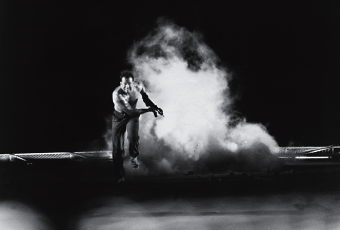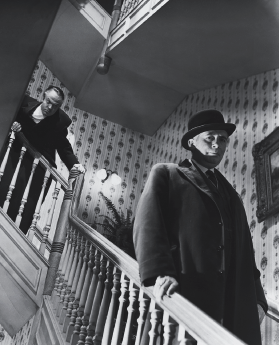Movies and Film: Taking in a Movie vs. Watching a Film
Taking in a Movie vs. Watching a Film
Sounds simple, right? When you "take in a movie," you drive to the local multiplex, buy a bag of popcorn, and settle back into a comfortable reclining seat in preparation for two hours of innocent escapism. When you "watch a film," you fight for parking on the campus of the local college, university, or public library, get handed a brochure describing upcoming films in the "Paraguayan Cinema Since 1970" series or some such, and sit craning your neck for three hours in an impossibly uncomfortable folding metal chair as a half dozen beret-wearing grad students with goatees murmur knowingly at every incomprehensive snippet of dialogue.

Die Hard: The classic flick in which things explode.
The "flick" you'd watch in the multiplex would be something like Die Hard (1988), a clich-ridden but fun-as-hell romp featuring Bruce Willis, explosions, and truly bad-ass special effects. The "film" you'd likely see in the film series would be something along the lines of Orson Welles's Citizen Kane (1941), a classic and artistically innovative work with complex psychological themes highlighted by brilliant technical feats of camera work, sound, and mise-en scne.

Citizen Kane: The Classic film with literal and figurative depth.
This kind of image is one of the main stumbling blocks keeping many people from becoming real aficionados of film. So many of our students have complained that learning too much about the aesthetics, economy, and theory of film "ruins" the movies for them. Quite simply, they say, we're trying to "intellectualize" too much, losing sigh of the simple enjoyment that the movies can provide.
Let's get this out on the table right now: The things you'll learn in this will enhance your enjoyment of the movies, not detract from it. Once you become educated about, say, the role of cinematography in the "look" of a film, or the crucial process of editing in the final phases of production, or the fascinating perspectives to be gained through a psychoanalytic approach to interpreting the pictures you watch, you'll be amazed at how much more you get out of each and every trip to the theater. By the end of this, we hope you'll no longer completely accept the venerable distinction between "flicks" and "films". Though it's an important distinction to be aware of (and in fact we use it regularly in the following sections), we want you to regard every flick you watch as a film that you can unpack, analyze, and interpret to your heart's content.
Excerpted from The Complete Idiot's Guide to Movies and Film © 2001 by Mark Winokur and Bruce Holsinger. All rights reserved including the right of reproduction in whole or in part in any form. Used by arrangement with Alpha Books, a member of Penguin Group (USA) Inc.
To order the e-book book direct from the publisher, visit the Penguin USA website. You can also purchase this book at Amazon.com.







